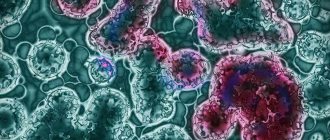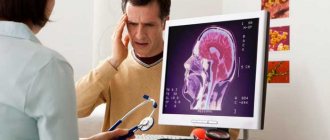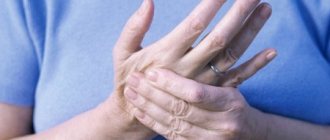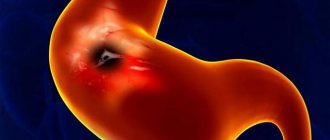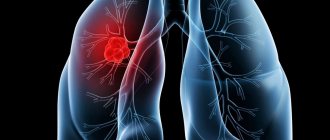Parkinson's disease is a degenerative neurological disease that occurs with the destruction of neurons and a decrease in the synthesis of dopamine (the most important neurotransmitter). The disease progresses slowly but severely. The first symptoms are increased sweating, depressed mood, difficulty defecating, which over time is complemented by stiffness of movements, their slowdown, and muscle rigidity. Is it possible to cure Parkinson’s disease and what methods are used in this case, let’s take a closer look.
Description
Parkinson's disease is one of the most pressing problems of modern medicine, which remains not fully understood, despite more than a century of description. Details of the discovery of the disease and the chronology of its study can be found here. Many neurologists and neurobiologists, as well as specialists from other medical fields, are still puzzled by the search for the causes of the disease.
According to forecasts, in our time of ongoing and steady aging of the population, the incidence of neurodegenerative pathologies, and in particular Parkinson’s disease, will gradually increase and even “rejuvenate”.
Thanks to active research, over the past three decades, the development mechanisms and target organs of this disease have been discovered and studied. However, the true causes and methods of preventive action in order to prevent the disease have yet to be learned and introduced into medical practice.
Well-known successes have been achieved in terms of the treatment of Parkinson's disease, which has improved the quality of life of patients for many years. But no one has yet achieved a complete recovery. This is due not only to insufficient knowledge of the disease, but also to late patients seeking qualified help.
How to recognize the onset of pathology and not miss it? When should you go to the clinic for examination, and what procedures will you undergo? You will find answers to these questions below.
Adaptation to a new lifestyle
To treat Parkinson's disease at home, it is necessary to create comfortable living conditions. Often the violation requires the replacement of some furniture, especially in the final stages of internal rearrangement. A special bed, equipment for going to the toilet and taking a bath will greatly facilitate the patient’s life when motor limitations become especially noticeable.
As for the ability to carry out usual work activities, this will also soon decrease significantly. As long as the disease does not require the patient to stay at home all the time, he or she can benefit from occupational therapy, but care should be taken to ensure a comfortable way to get to the place. At the same time, the load received at work must be commensurate with the available resources. Excessive mental or physical stress may worsen the condition.
Later, when Parkinson's disease makes it impossible to carry out work activities, it would be appropriate to provide the patient with opportunities for occupational therapy at home. This can be creative activities (sewing, modeling, putting together puzzles with grandchildren) or solving everyday problems (cleaning, caring for plants). The most important thing is to prove to the patient his importance and need for the family and to show that he has not become helpless and useless.
First symptoms
The disease is more common in developed countries, which are famous for the quality of medical care and use modern treatment methods to prolong the life of patients. Increasingly, scientists are talking about gender differences in the causes and symptoms of pathology. A number of experts believe that the influence of hormones extends to the appearance of Lewy bodies in the hypothalamus, whereas they are usually detected in the cells of the substantia nigra of the brain.
Lewy bodies are intraneuronal inclusions that are a characteristic feature of dementia. There is ongoing debate about the relationship between dementia and Parkinson's disease - are they forms of the same disease or are they completely different pathologies? Most scientists are inclined to the second option.
Early signs of Parkinson's disease are most often ignored or attributed to other conditions - stress, overwork, etc. Today there is no universal diagnostic criterion that allows one to identify the disease with one hundred percent certainty.
At an early stage, the following symptoms are noted:
- dragging of the leg;
- absence or decrease in the amplitude of arm swings when walking;
- deterioration of sense of smell, sensation of phantom odors;
- change in handwriting - it becomes illegible, small, with “shaky” letters;
- a frozen facial expression that does not convey emotions;
- fatigue and dizziness;
- poor night sleep, causing daytime sleepiness;
- frequent urge to urinate, urinary incontinence;
- spontaneous numbness of the upper or lower extremities;
- nasal congestion;
- tingling sensations in the body, sometimes painful.
Women often experience pain in the shoulders or neck, they react acutely to stress and are susceptible to anxiety. Both women and men often complain of problems with sleep due to “restless legs syndrome,” when extremely uncomfortable phenomena appear deep in the calf muscles - itching, bloating, etc. With movement, the unpleasant sensations weaken or go away. RLS has a clear circadian rhythm and appears or worsens in the evening or at night. As a result, insomnia develops - short or inadequate night sleep.
The Hoehn and Yahr classification has been used since 1967, when it was published in the journal Neurology.
One of the early symptoms of Parkinson's disease is orthostatic, or postural hypotension, that is, the body's inability to maintain constant blood pressure in an upright position.
Diagnostics
When visiting a doctor, you first need to identify the signs of parkinsonism, and only then determine whether it is Parkinson’s disease or a condition caused by another pathology.
Differentiate with the following conditions:
- Primary, dystonic tremor
- Emotional disorders (apathy, depression, abulia)
- Pathological change in muscle tone
- Dissociative disorder
- Pathological changes in the frontal lobes
- Disorders of the blood supply to the brain
- Tumors
- Changes in brain fluid circulation
- Hypothyroidism
The second part of the diagnosis is aimed at differentiating between Parkinson's disease itself and other causes of parkinsonism. The UK Parkinson's Disease Society Brain Bank criteria are used for this purpose.
What else to pay attention to
There are many manifestations of Parkinson's syndrome, but the manifestation of the disease occurs differently in each patient. As a rule, pathological changes in the basal ganglia of the brain begin much earlier than a person notices deviations in the functioning of the body.
A distinctive feature of juvenile parkinsonism, which affects young people under 25 years of age, is the bilateral manifestation of symptoms. In classic Parkinson's disease, symptoms first appear on only one side of the body.
In addition, in young patients the disease is of a genetic nature, which has been confirmed in scientific studies. However, in some cases, secondary parkinsonism occurs, which develops against the background of encephalopathies, encephalitis, stroke, malignant neoplasms, and also due to the use of drugs such as Cyclophosphamide, Methotrexate, Amphotericin B.
One of the symptoms that occurs at the onset of the disease is a change in voice timbre - it becomes low, quiet and hoarse. Due to the tension of the facial muscles, speech slows down and becomes monotonous; there is no intonation in it. A person tries to open his mouth wider to pronounce words clearly, which is a clear sign of Parkinson's disease.
The pathological process affects the functioning of the smooth muscles of the gastrointestinal tract and urinary tract. This is manifested by stool disturbances and slow digestion, as well as a feeling of rapid satiety after eating even a small amount of food.
In addition to those described above, other symptoms characteristic of Parkinson's disease may appear:
- rare blinking, frozen facial muscles that resemble a mask and do not express emotions;
- dizziness when getting out of bed or chair;
- the appearance of a stoop that was not there before;
- loss of speed and spontaneity of movements - slow actions when performing various tasks: fastening zippers and buttons, tying shoelaces;
- excessive sweating, regardless of temperature, greasy skin;
- increased salivation;
- decreased mood, desire for social isolation;
- deterioration of thinking ability and memory;
- trembling at rest. If tremor occurs in response to cold, nervous stress, physical activity or other external influences, then there is no cause for concern. The development of the disease can be suspected precisely by resting tremor, when fingers or toes, eyelids, lips or lower jaw twitch involuntarily.
What happens in Parkinson's disease?
The process of degeneration occurs in the so-called substantia nigra, a group of brain cells belonging to the subcortical formations. The destruction of these cells leads to a decrease in dopamine levels. Dopamine is a substance with the help of which information is transmitted between subcortical formations about programmed movement. That is, all motor acts are, as it were, planned in the cerebral cortex, and are implemented with the help of subcortical formations.
A decrease in dopamine concentration leads to disruption of connections between neurons responsible for movements and contributes to an increase in inhibitory effects. That is, the execution of the motor program becomes difficult and slows down. In addition to dopamine, acetylcholine, norepinephrine, and serotonin influence the formation of a motor act. These substances (transmitters) also play a role in the transmission of nerve impulses between neurons. An imbalance of mediators leads to the formation of an incorrect movement program, and the motor act is not implemented as the situation requires. Movements become slow, limbs tremble at rest, and muscle tone is impaired.
The process of neuronal destruction in Parkinson's disease does not stop. Progression leads to the appearance of more and more new symptoms, and to the intensification of existing ones. Degeneration also affects other structures of the brain, and mental, psychological, and autonomic disorders also occur.
Forms and stages
There are 3 main forms of Parkinson's disease, which have 5 stages of development. Rigid-bradykinetic form: waxy state of skeletal muscles, progressive slowing of passive movements, limited movement in joints - limbs may remain in a flexed or extended position. This form is characterized by the pose of a mannequin, or petitioner - a hunched back, a bowed head, legs bent at the knees, and hands at the elbows.
With the trembling-rigid form, stiffness of voluntary movements is observed in combination with tremor of the distal limbs - hands and feet.
As the disease progresses, visible changes in posture occur - hunching and characteristically bent limbs indicate a patient suffering from parkinsonism
The shaking form of Parkinson's disease is characterized by almost constant shaking of the limbs and head, including the lower jaw, tongue, eyelids and lips. The tremor usually has a medium or high amplitude, muscle tone may increase slightly, and the speed of voluntary movements is maintained.
In the later stages of the disease, postural instability appears when the patient has difficulty moving and cannot immediately stop moving. In the final phase of the pathology, a phenomenon called propulsion is observed - an anterior shift of the center of gravity. This means an irresistible urge forward, which usually occurs when walking.
Stages of development:
- 1 - tremor and muscle tension occurs on one of the limbs;
- 2 - symptoms are observed on both sides of the body;
- 3 - postural instability is added to bilateral signs - the inability to maintain balance in a static position or when changing body position;
- 4 - partial immobility, need for outside help. The ability to walk and stand independently is preserved;
- 5 - complete immobility, loss of ability to self-care.
Physiotherapeutic treatment at home
Not all methods of physiotherapy can be organized at home and they should only be selected with the permission of a doctor. The most popular and effective treatments for Parkinson's are:
- Hydrotherapy, including contrast showers, therapeutic baths, baths or saunas
- Aromatherapy as a relaxant
- Massages, including hydromassages
- Magnetotherapy
Important: The number of procedures, their frequency and other features are determined by the physiotherapist, taking into account the fact that they will be carried out at home.
Treatment for Parkinson's at home cannot be considered extremely effective. It will still be impossible to do without medical help. On the other hand, medication is also unable to completely eliminate symptoms and stop the development of the disorder. Spending several years in the hospital desperately trying to interrupt or slow down the process is also not a good idea. But you should definitely prepare for the possible difficulties of a person with disabilities staying at home. Because it will be difficult not only for himself, but also for his family.
Compliance with all recommendations will help alleviate the disease and make living together more comfortable. Sometimes it can be helpful to seek help from an occupational therapist. This is the name given to specialists who help patients and their relatives adapt to new conditions, become less dependent on Parkinson’s disease, and arrange their homes.
Gender differences
Motor and neuropsychiatric disorders manifest differently in men and women. Women suffer predominantly from the trembling form of the disease, which progresses quite slowly. Motor disorders occur later than in men. Difficulty with writing and an awkward, unsteady gait are also less common in women. However, it is women who are more likely to experience dyskinesia - a disorder of the motor function of the digestive system, leading to slow movement of the food coma through the gastrointestinal tract.
Men more often suffer from deterioration of memory and attention, loss of spatial coordination and decreased speech function, but are less likely than women to experience weakening of cognitive functions and the development of dementia. In addition, most patients cease to recognize other people's emotions: women cannot “read” anger and surprise, and men cannot “read” fear.
Since women tend to experience depression and men tend to experience anger, the former are more likely to be prescribed antidepressants, while the latter are more likely to be prescribed antipsychotics. Women find it much more difficult to carry out daily activities due to severe trembling of body parts, but they rarely experience behavioral problems.
Causes
Scientists have not yet been able to identify the exact causes of Parkinson's disease, but there is a certain group of factors that can trigger the development of this disease.
According to statistics, Parkinson's disease is diagnosed in 1% of the population under 60 years of age and in 5% of older people. The incidence among men is slightly higher.
The causes of Parkinson's disease can be identified as follows:
- aging of the body, in which the number of neurons naturally decreases, which leads to a decrease in the production of dopamine;
- hereditary predisposition;
- permanent residence near highways, industrial enterprises or railways;
- lack of vitamin D, which is formed when exposed to ultraviolet rays in the body and protects brain cellular formations from the destructive effects of free radicals and various toxins;
- poisoning with certain chemical compounds;
- the appearance of defective mitochondria due to mutation, which often leads to neuronal degeneration;
- neuroinfections (tick-borne encephalitis);
- tumor processes occurring in the brain or its trauma.
Parkinson's disease can also develop, according to some statements, against the background of drug intoxication associated with long-term use of phenothiazine medications by patients, as well as with certain narcotic drugs.
Scientists come to the conclusion that most often a combination of several of the listed reasons leads to the development of the disease.
The causes of the disease also depend on the type:
- Primary parkinsonism is caused by a genetic predisposition in 80% of cases.
- Secondary parkinsonism occurs against the background of various pathologies and existing diseases.
Risk groups include people 60-65 years old, most often the male population. It also occurs in young people. In this case, it proceeds more slowly than in people of the older age group.
It is worth noting that the signs of Parkinson’s disease in women and men do not have obvious differences, since cell damage occurs regardless of a person’s gender.
Parkinson's stages according to Hoehn-Yahr
The clinical symptom severity scale appeared in 1967. Later it underwent minor modifications.
- Stage zero. The patient has no signs of disease;
- First stage. The clinical picture affects one limb. More often the disease manifests itself as tremor. But in some cases there is pain and stiffness;
- Stage 1.5. During the period, the clinical picture moves from the limb to the torso;
- Second stage. Trembling, rigidity or hypokinesia manifests itself on both sides. The arms or legs are affected symmetrically. The muscles of the trunk are affected. But the patient remains resilient;
- Stage 2.5. Beginning of postural instability. Unsteadiness, frequent falls. But the patient is able to move independently;
- Third stage. The clinic covers important functions (impaired walking, tremors), but the patient is able to care for himself;
- Fourth stage. Outside help is necessary in everyday life. It is impossible to carry out simple actions. With support, the patient is able to rise, walk, and turn in bed;
- Fifth stage. Complete disability. The patient is bedridden.

